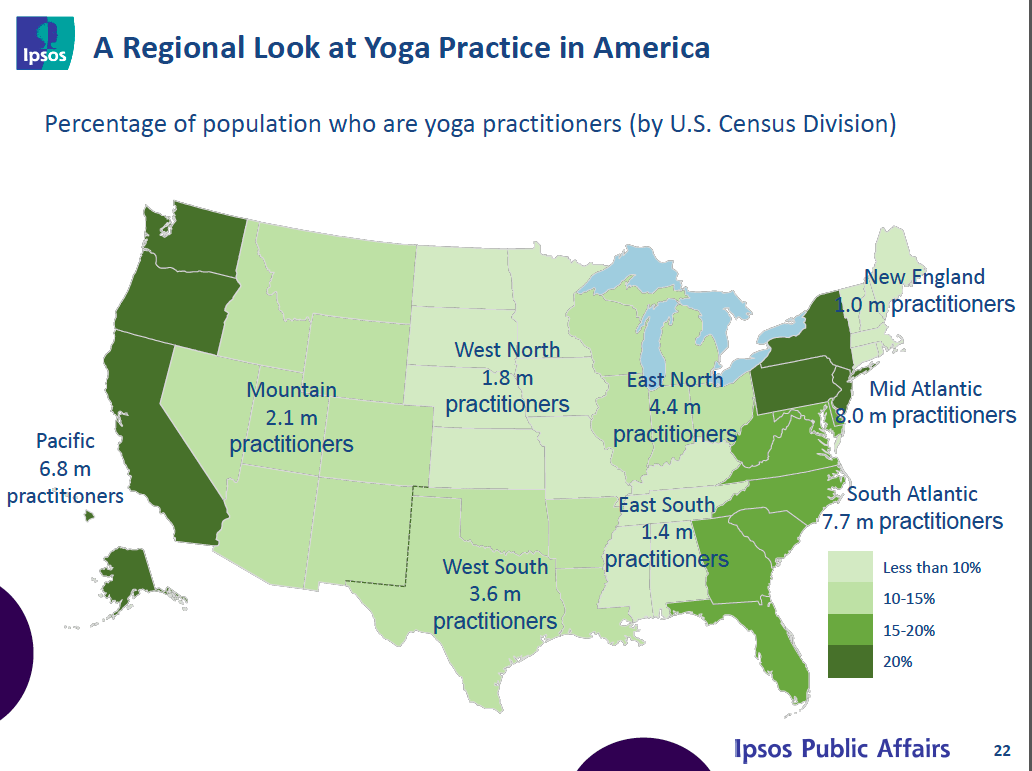
Poem and Prayer for the Night Before
November 7, 2016
What a Yoga Bro Who Sees His Trump Vote as An Act of Love Tells Us About Yoga Spaces
November 18, 2016This thought-experiment is meant for yoga practitioners and teachers who identify as progressive and/or opposed to the President-elect and the hellfire of social oppression, political regression, and environmental destruction that’s upon us.
It’s for those who wonder if they can maximize the physical, financial and emotional resources they commit to internal work and justice by combining them more than they’re combined already.
Most importantly, it’s for studio owners and prominent teachers who feel that their student base fits this profile.
If that’s not you, I wish you well, and we’ll talk some other time.
Ideas are one thing, but making them work can be bonecrushing. So before going anywhere with this one it would be good to discuss its pros and cons. Is it useful? Would spending energy on it splinter scarce resources? Is it an organizational idea that will preach to the choir and increase the insular bubbling that is part of our tragedy? I’d love to hear your comments, below.
Four caveats:
- I come at this without any political science or statistics training, so I’m totally prepared to be taken to the woodshed here.
- I know that the tone here might be too wonkish for many phases of rage and grief. It can be a mark of privilege and perhaps dissociation to offer theory too soon. I have no intention of interrupting all the colours of outpouring. If the timing doesn’t sit well for you, my apologies, and maybe you can bookmark it for later.
- The title for this organizational idea, Engaged Yoga Network (EYN) is a placeholder that can be changed, and not meant to be confused with or distract from the work of the Socially Engaged Yoga Network of Chicago, which does awesome local service work.
- I’m a dual U.S.-Canadian citizen with a lot of international readers. This could be an international initiative for sure, but it’s probably simpler to start focused. I don’t know.
Here goes.
If the 9-12 thousand((Estimate from Andrew Tanner of YA.)) yoga studios that dot the U.S. were better networked, they could potentially provide organizational support via meeting spaces and marketing infrastructure to the political aspirations of a population larger than the Green Party membership, UAW, and MoveOn.org put together. This population would largely intersect with the same population that has dissociatively underserved the common good in relation to its resources and privilege: middle-to-high income white people.
Ipsos tells us there are 36 million practitioners who have attended a yoga class over the last six months. Forty-five percent of them report practicing in one of the thousands of yoga studios in the U.S. That’s 16.2 million people: about 13% of the Nov. 8th voting turnout.
How does this demographic shake out, politically? We’ve been around the block enough to know that practicing yoga is not a reliable predictor of political sentiment or affiliation. People come from across the political spectrum to practice. Moreover, modern global yoga culture has historically positioned itself through the pretence of political neutrality in order to serve a politically diverse clientele, while projecting a spirituality that transcends politics.
That said, the harrowing electoral college map:

…reminded me of this map from earlier this year:

From Ispos, Yoga in America 2016, p. 22.
If we transpose the electoral results onto the studio-practicing population, at the very least half of that 16.2 million opposed the President-elect. But it must be way more than that. The typical yoga class in an urban centre or mid-size town (where more of them are taking place) isn’t split evenly between red and blue voters. A higher percentage of yoga practitioners are college-educated than not, and there are more studios in urban than rural areas: these are both correlated with stronger blue leanings.
So we can definitely say that somewhere between 8.1 and the full 16.2 million studio practitioners currently oppose the President-elect. If we split the difference and called it 12 million Trump opponents, we’re talking about a block almost as large as the AFL-CIO. My gut tells me two things: that’s a conservative estimate, and it’s also a whole lot of sleeping infrastructure power that can be mobilized from the coasts inwards.
Questions:
Would those 12 million progressive practitioners be supported in their social values and deepen their levels of activism if their studios were signatories in a national political network? How many of those 12 million want that kind of support? Do they have brick-and-mortar, flesh-and-blood outlets for political engagement elsewhere, along with the time to invest in them? (I ask this because I know too many practitioners who say they would like to be more involved in political justice work before and after election days, but never have as much time as they’d like.)
Would those 12 million appreciate a space that offered the self-care of yoga and meditation in the front rooms, and community organizing in the back rooms? Would they mind that the advertising for each overlapped? Or do they specifically come to yoga spaces to get away from their socio-political exhaustion? And would an explicitly stated political stance alienate enough of a percentage of non-progressives in a given studio (in purple states and cities, for instance) to undo any positive gains? If this is a possibility, could the stance be modulated as needed?
These are questions that only each studio owner can hope to answer.
Owners who have jumped in headfirst have overtly politicized their spaces by hosting social justice events, fundraisers, and accessibility initiatives. A few have developed entire political economies, like my friend Christi-an Slomka who ran her former studio in Toronto with her colleague Jamilah Malika on a model that acknowledged its occupation of First Nations territory, fostered safer space, trained teachers in anti-oppression work, helped marginalized and racialized groups foster dedicated classes, and had a robust work exchange system. Her work is on pause for now, but her colleagues Leena Miller Cressman and Emma Dines continue it in Kitchener, Ontario. Laura Humpf of Rainier Beach Yoga in Seattle and POC Yoga, withstood withering attacks from the Right and Alt-right for offering yoga classes for people of color. She’s continuing the work nonetheless.. Lisa Wells has been hosting discussions on Racial Justice and Food Justice and hosted readings by Queer Poets of Color at her studio in Corvallis, Oregon. She’s now collecting gear and raising funds and subbing out her classes so she can stand with the Water Protectors at Standing Rock before the month is through.
This organic layer of yoga-demographic radical activism is natural to college towns and diverse urban centres. But these yoga activists are usually on their own with their efforts in Yogaland. There can be deep costs to this isolation, in terms of physical and emotional exhaustion, and financial sacrifice. While many might want to follow in these leaders’ paths, the levels of commitment these leaders represent might be too demanding.
Slomka, Miller-Cressman, Dines, Humpf and Wells (is it any wonder that women are leading here?) might personally inspire graduates of their training programmes to emulate their activism, but if one of them wanted to open a progressively-oriented studio in Reno or Fort McMurray, wouldn’t it be nice if they were supported by something beyond personal mentorship, which is always limited by time and energy? What if she had instant access to a national network of ideas custom-selected for yoga demographics? What if the intellectual and emotional resources of that leadership were captured so that the leaders didn’t have to share them over hundreds of individual phone or Skype calls.
The progressive studio owners I know are all run off their feet. They always want to do more community and social service than they have time for. What if they belonged to a network that fed them monthly ideas for service and best practices?
Can we imagine an organization that can support the progressive work of any studio owner or teacher who wishes to mobilize their network to a commitment level appropriate to their community? Can we imagine a meeting-place for intellectual resources, support for initiatives in less progressive areas, and a greater sense of national cohesion?
Yoga practice will continue to help those of us lucky enough to do it to self-regulate. But can yoga infrastructure help resist the tide of the next four years — especially for those who don’t have time to do yoga?
I’m thinking that an “Engaged Yoga Network” would consist of two arms:
- A simple, crowd-sourced manifesto of progressive values to which studios can be signatories.
- A network of online resources especially crafted for yoga spaces, that support teachers and both stimulate and normalize activism at the studio level.
There’s so much great progressive yoga-related content out there, being generated by organizations like CTZNWELL, Off The Mat, and the Yoga Service Council. EYN would be about helping to aggregate it and integrate it with the rhythms of physical practice spaces.
In addition to the class downtime space of rooms for strategic meetings, many studios already use a potential delivery device for this often-fragmented content, in the form of client management software. Imagine studios being able to add a tab or menu item to their MindBodyOnline interface that they could load up with news, resources, and events from an EYN content consolidator? What if every signatory had an EYN portal on their homepage?
But yet another fancy web-based tool does not a movement make. The value of EYN could be to mesh the best of progressive yoga content and activism opportunities into the presentation of regular studio programming, through which actual people people actually meet and feel things together and maybe have tea. It could function as the thematic backdrop for self-work. That’s what politics is, anyway.
An online foundation could open the door for studio owners to pick and choose initiatives and commitment levels that suited their time and budgetary limitations, as well as the tolerance of their student base for activism. A studio in Ithaca would be well-positioned to go full-on progressive-political, trying all kinds of things that wouldn’t fly in Phoenix. But both could be supported by and affiliated with the same stream of content and inspiration. And neither would be working alone.
I mentioned above that global yoga operates under the pretence of political neutrality. Not to belabour this, but it’s a pretence because the culture lives in spaces of privilege and non-diversity where financial boundaries and time constraints restrict accessibility. Modern global yoga has grown in popularity in perfect sync with the rise of neoliberalism. We could almost say ((Brian Culkin has a forthcoming book chapter on this.)) that yoga functions as the individualistic religion of the neoliberal era. Even most of its physical spaces exist through the processes of deindustrialization and gentrification that have mercilessly increased inequality.
In other words, as the notion of the common good has catastrophically devolved over the past forty years to where we are today, yoga culture has thrived. Isn’t that weird? Its thrived in part by not pushing back, by letting white and privileged people restore themselves without questioning themselves. Maybe, this week, this fact has become unbearable to many of you.
The typical yoga studio is already a politicized space. At this critical juncture, what kind of politics do we want it to communicate? Could there be a more pressing time to mobilize every resource we have?
It was Be Scofield who first convinced me that yoga practice doesn’t naturally lead to progressive action. I once asked her why then, as a social justice activist, was she interested in yoga culture at all? “Because,” she replied, “it can lend organizational power to progressive ideas.”
Yoga culture doesn’t make people progressive, but it does gather together progressive resources of space and intention and infrastructure. These resources are untapped because for many reasons the culture mainly positions itself as apolitical, and recognizing this is false carries costs.
The untapped progressive resources of yoga culture are built on the physical presence and privilege of as many as twelve million people. Many of these might already be politically engaged. Is it worth trying to use this infrastructure to support and encourage those who aren’t yet doing as much as they can or want to do? And can the growth of yoga into the heartland be consciously and efficiently linked to a growth of progressive listening, attunement, and coalition-building in the heartland?
LMK what you think if/when you have a moment. Everyone is so busy and overwhelmed. Blessings on all of your work, whatever it is.
_____
N.B.: My usual policy is to publish all comments. But I’ll be selective here. If it’s not constructive or if it’s spiritual bypass-y, I won’t publish it. There’s really no time to waste now.
Also: I don’t feel any ownership or authority over this idea. There are way more qualified people than I out there to run with this or something like it, if it’s worthwhile. I’ll support them any way I can.